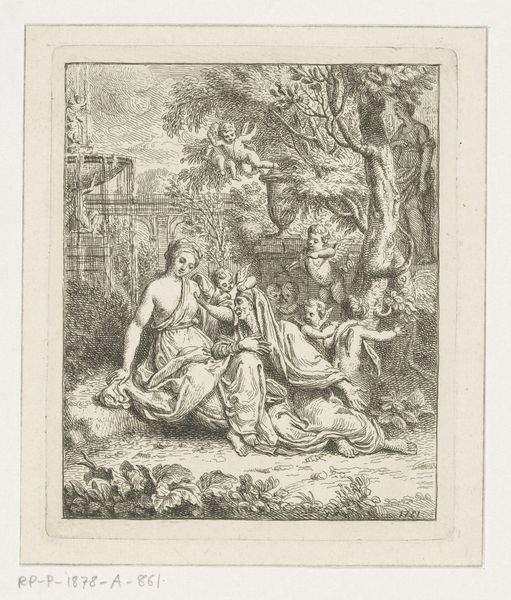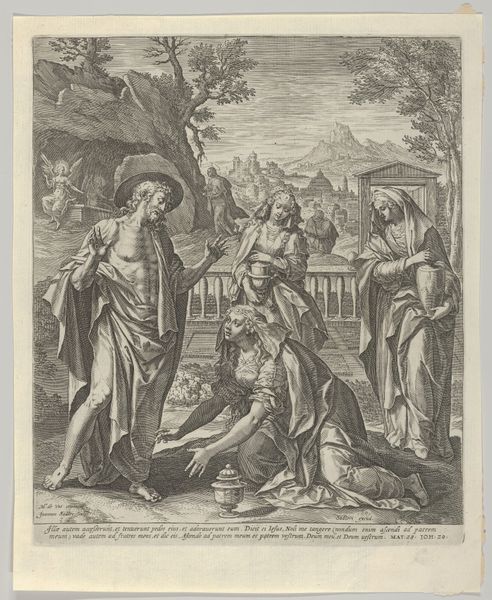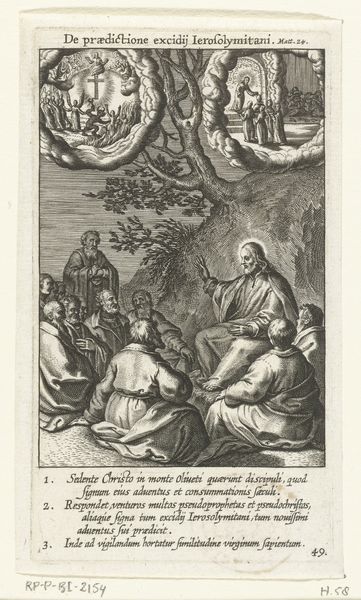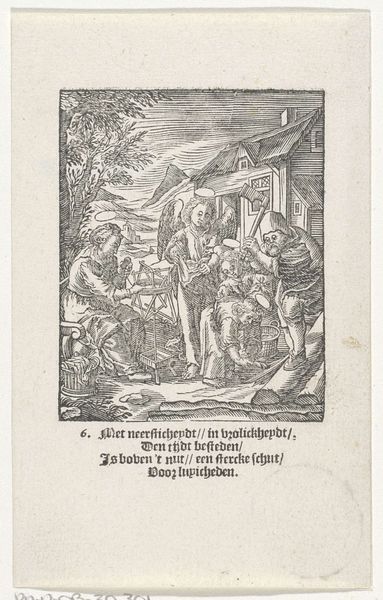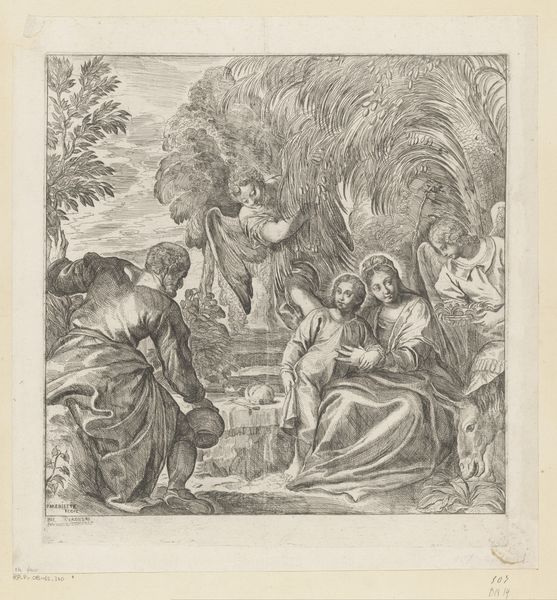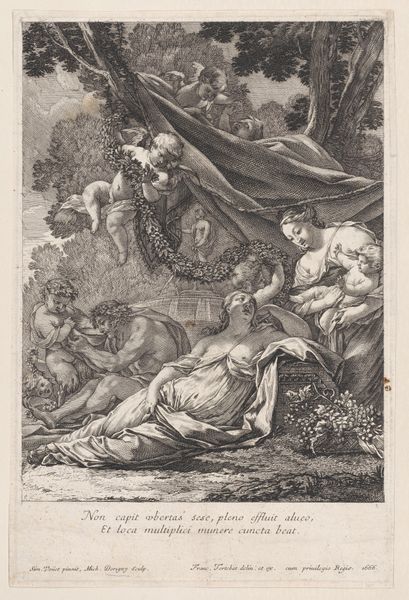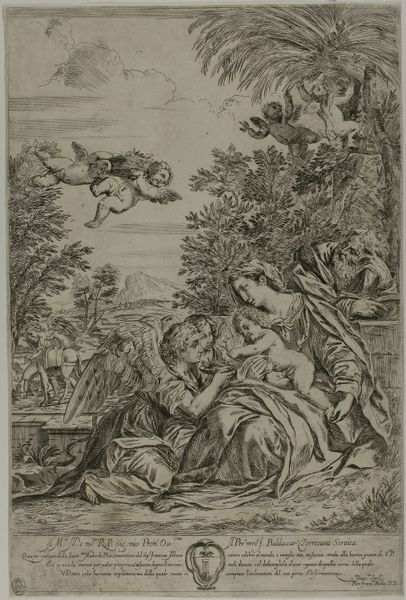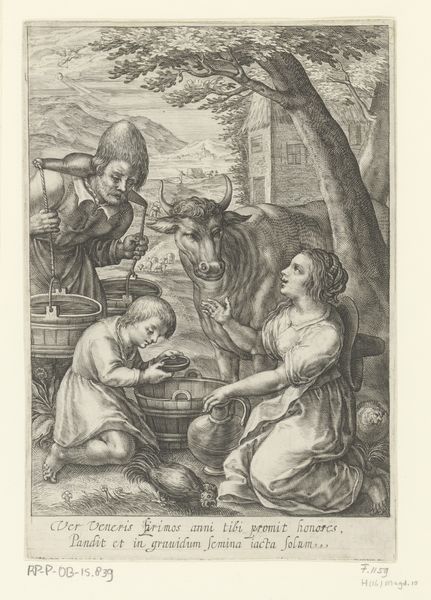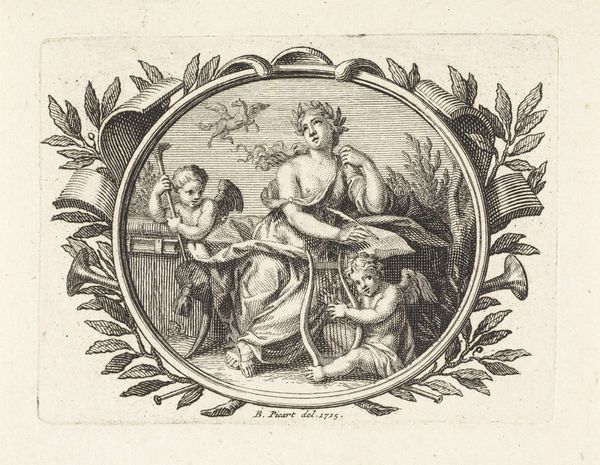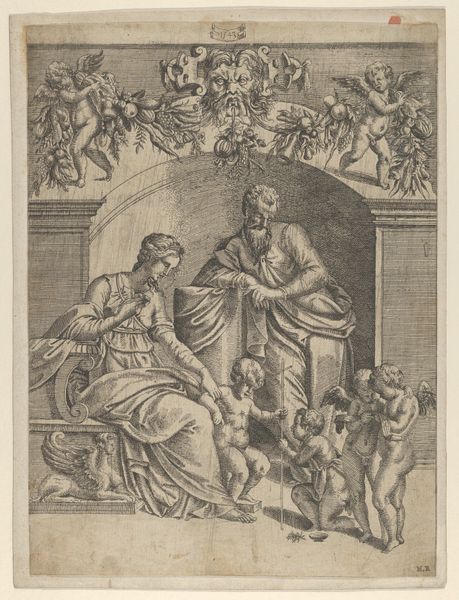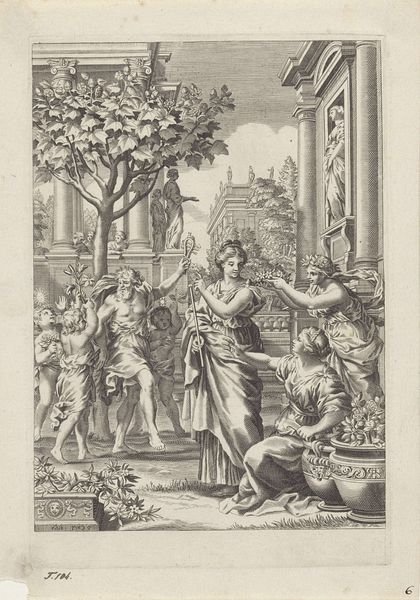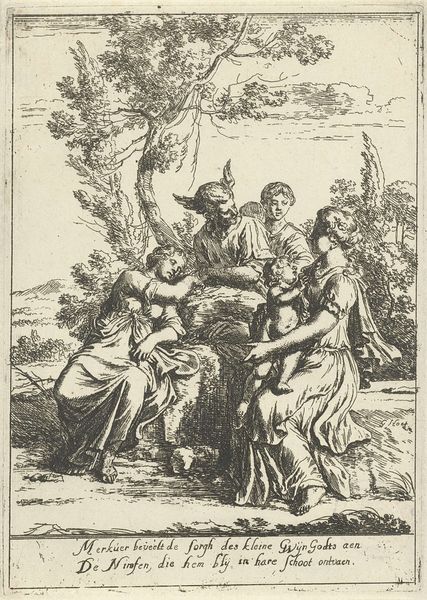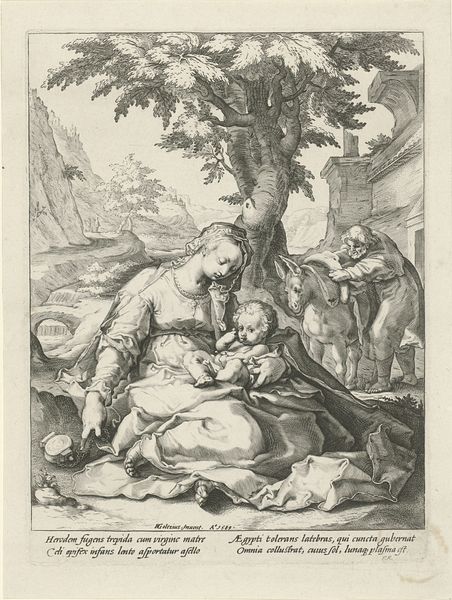
Twee vrouwen ontfermen zich over kind met vruchten en bloemen 1590 - 1624
0:00
0:00
boetiusadamszbolswert
Rijksmuseum
print, engraving
#
baroque
# print
#
pen illustration
#
landscape
#
figuration
#
genre-painting
#
engraving
Dimensions: height 95 mm, width 56 mm
Copyright: Rijks Museum: Open Domain
Curator: This print, attributed to Boëtius Adamsz. Bolswert and currently held in the Rijksmuseum collection, is entitled "Twee vrouwen ontfermen zich over kind met vruchten en bloemen," which translates to "Two women caring for a child with fruits and flowers." It dates roughly between 1590 and 1624, placing it firmly within a period of evolving printmaking techniques. Editor: Oh, it has this melancholic, garden-of-earthly-delights feel, doesn't it? The languid figures beneath that oversized tree… It’s all so heavy and drowsy, almost like a dream, or a really pleasant, if slightly unsettling, memory. Curator: Indeed, the material production tells us a great deal. This is an engraving, likely intended for wide circulation, bringing allegorical scenes and moralizing themes to a broad audience. Note the relative ease of mass production compared to painting, highlighting how printmaking democratized access to imagery. Editor: That makes sense. Looking at it, the textures are beautiful—especially the rendering of the tree bark and foliage—but the scene is really interesting. There's this child, almost swooning, and these women fussing over her with fruit and flowers... It has such an intimate and strange feel at once. Curator: Consider also the symbolic weight: flowers represent fragility, mortality, while fruits denote plenty, nourishment—elements that reinforce ideas around care, possibly charity or redemption. The landscape in general invites speculation; we see traces of human cultivation with the fence in the background set against what seems like a primordial forest. Editor: It’s funny, knowing that the flowers and fruit are meant to represent deeper concepts; all I really feel is this intense feeling of summer, the slightly overripe scent of it all… The shadows and those watchful women create such a mood. It all speaks of moments of tenderness, even protection from life's harsher realities. Curator: Exactly! This image offered consumers then, and offers us now, a complex interplay of artifice, moralism, and even proto-capitalistic distribution strategies embedded in its production. Editor: Mmh. Seeing it this way is making me question my own, perhaps too sentimental, interpretation of a moment captured in ink. Still, these fleeting personal interactions really resonate, I wonder what others see?
Comments
No comments
Be the first to comment and join the conversation on the ultimate creative platform.
